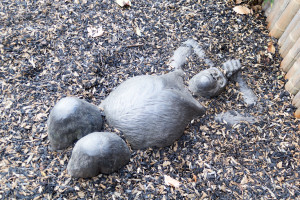With a recent N of 2, and with conversations about airway management, the RAMP position, and “defending physiology” ringing in my ears, I now have a new question:
“I need to do a neck line. Does my patient need to be flat?”
N of 1: Bad COPD, PNA, sick, no IV access. The pt. has bilat inguinal scars and previous fem-pop bypass surgeries. His groin is an indurated, matted mess. The pt. has already failed 2 U/S guided attempts to access an internal jugular vein. But this pt. cannot tolerate being flat. He visibly becomes air hungry and his heart rate and oxygen saturation agree with his “subjective” discomfort. A femoral is attempted but abandoned after difficulty threading the wire with the hips flexed.
So I put in a subclavian(SC) line. With the pt. vertical, sitting up in the bed at 90 degrees. The pt. now has labs sent, a VBG in the bank, IV access for antibiotics and BiPAP administered sitting upright.
N of 2: I get called over by another attending who’s getting crushed on our usual Monday night overnight. The pt. is 18 years old, has had umpteen admissions for DKA, and has a mother who appears to be ready to hit someone who’s screaming that no one has called their endocrinologist. I enter the fray because we have no access. The resident has attempted and failed at peripheral access as well as a femoral, an IJ and a SC line – but the pt. cannot lie flat and the procedures are hurried and interrupted. He is breathing at 35 and looks ill.
So I put in a subclavian line. With the pt. vertical, sitting up in the bed at 90 degrees. The pt. can now receive IV fluid and IV insulin.
Were these scenarios to happen to me today, I might have a lower threshold for IO access. On the other hand, IOs in awake, perfectly mentating pts. aren’t all that common. And when I see a pt. being lowered into Trendelenberg position for an attempted SC, all I notice is that the apex of his lung is being brought closer to the needle to no purpose. So for many pre-ultrasound years my patients were flat but not Trendelenberged for this procedure. The subclavian vein particularly is well-anchored, and while it may be not as engorged in an upright position, it likely may not have moved much. Over the years, I have allowed pts. to remain with the HOB at 0-30 degrees, but never at 90. I think it’s time.
U/S application to the central line is becoming a best practice regardless of the approach. But it requires a still, cooperative patient. It would have been impossible in either of the above patients were they flat. In an upright, more comfortable pt., U/S becomes an option, although the SC offers a technically difficult view. The two central lines described here were placed with landmark technique (no, we don’t call it “blind”).
The other consideration in completing the procedure upright is likely air embolism. Two possible solutions exist to this potential complication. One is technical, requiring a kit in which the wire is passed through the back of the syringe without ever removing it from the needle. The other is a workaround, requiring one to lay the patient flat just long enough to pass the wire and catheter. In both cases, a potential risk is weighed against the real and witnessed delay in lifesaving care.
Let the Patient Sit: Another tool in the critical care bank, or just another crazy idea?


